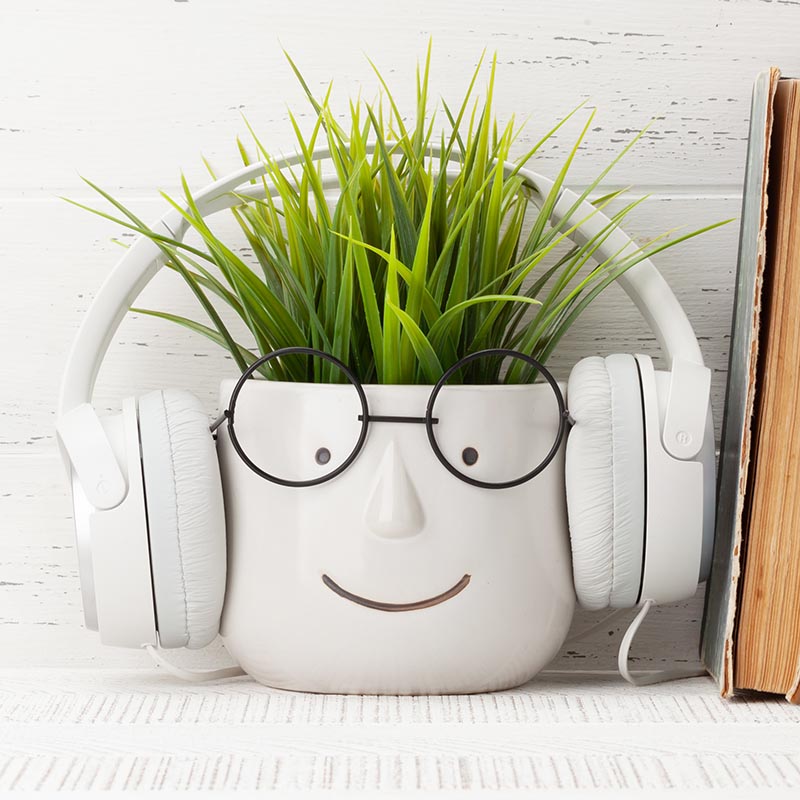
By: Mayra L.
Year: 2022
School: Westminster High
Grade: 12
Science Teacher: Huy Pham
Sound and music have been used on multiple occasions to determine if it would impact many things. Nerve plants were our ideal plant since its veins visually showed the impact of negative factors, they don’t need much watering other than keeping soil moist by watering them every two days with 5 ml of water, and their normal pH level is 6.5. While brainstorming how we would experiment on plants, we both realized our experience in band and playing instruments.
Using inspiration from previous studies, we made a new idea of our own. Knowing that some plants dislike loud, aggressive noises, we decided to see how specific instruments would impact plants instead. There was a total of 7 weeks with a data recording after trial each week which allowed us to collect the height, weight, width, color, number of leaves, pH level, and a personal rating of each plant.
We exposed the plant to one hour recordings of each instrument playing the song “Digital Patterns” twice a day, once during the morning and another time during the afternoon. Materials include 6 pots, 6 nerve plants, moist soil, pipet, petri dishes, test tube vials, ruler, scale, drums, saxophone, trumpet, water, pH strips, and electronics to play the recording. With six plants in total, each plant is exposed to different types of instruments. Woodwind (saxophone), brass (trumpet), percussion (drums), no sound (control), talking with music, and talking with no music.
Our problem is to figure out if the different frequencies from the listed instruments would affect the uptake of nutrients in nerve plants. We hypothesize that the nerve plant that is exposed to the woodwind will take up the most nutrients and increase overall plant growth out of the rest because a higher frequency would stimulate the plant more. In our procedure, we started out by labeling six plants then wrote down data about them in order to compare the experimental results to them. We then created one-hour recordings of each instrument then moved each plant back to its designated living area.
Over the span of 7 weeks, “No sound” lost the most leaves, “Brass” lost the most weight (we think this happened because it lost most of its leaves), “Brass” lost the most width (most likely due to it losing leaves) and all of them continued to grow in terms of length or stayed in a constant length change meaning some plants height had fluctuated and stayed in a constant measurement. For the pH level change, “No Sound” had the lowest pH left in the soil which indicates that it took up the most nutrients and brass had the most pH in its soil which indicates that it took up the least amount. For the quality of life graph, “Brass” definitely had the worst rating because it was the one closest to dying.
We concluded that “Brass” music negatively affected the nerve plant the most as seen with the highest level of pH change and nutrients leftover and its dull, droopy look after the end of our experiment. A noteworthy observation was the presence of a soft, spongy texture on plants “Talking + Music ” and “Brass” which we speculate was due to the explosion of cells inside the leaves, due to the stress from the exposure to its sounds. In conclusion, our hypothesis was wrong. Initially, we believed that woodwinds would cause the plant to thrive and take up more nutrients, but after the experiment, we found out that our control plant, the one with no music, took up the most nutrients. Keeping that in mind, we are altering our hypothesis. Plants overall prefer no music, however, have an overall positive reaction when exposed to higher frequencies.
Lastly, research by Florina Ionescu retrieved from
https://youhadmeatgardening.com/best-music-for-plants/.;
